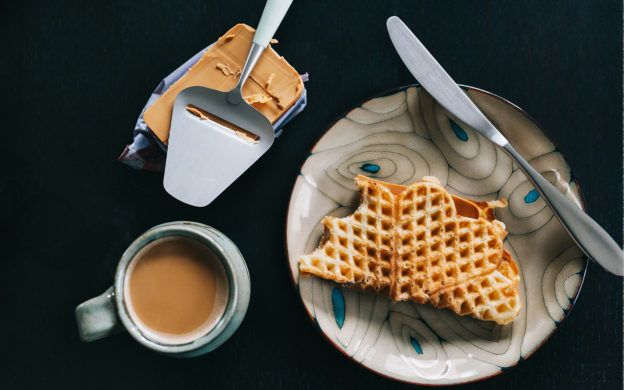It’s surprising that Norwegian cuisine hasn’t garnered more attention: the country has some of the best raw ingredients in the world. Norway’s growing seasons may be short but they’re incredibly abundant, as is its selection of wild game and catches from the sea. Today, this humble Nordic land is becoming a gastronomic powerhouse with major cities like Oslo and Bergen leading the way.
Norway has award-winning micro-roasts and hard ciders, craft beers, and cheeses – not to mention the freshest seafood and a growing number of Michelin-starred spots. Who would’ve thought that the Arctic nation would become an acclaimed culinary destination? Watch out Denmark! Norway may be the new jewel in the New-Nordic crown.
Here’s a guide for all your Norwegian-cuisine queries. We’re talking national dishes, New Nordic, what to eat in Norway, and what the Norwegians eat all year. Ready? Let’s dig in:

|
 |
 |
 |
|
|
|
|
 |
 |
 |
|
|
|
|
Country |
Norway |
National dish |
Mutton stew |
Staple foods |
Fish, wild game, lamb, cabbage, potatoes, flatbreads and cheese |
Culinary claim to fame |
Seafood, cheese, lefse, hard cider |
Number of Michelin stars |
11 (as of February 2020) |
What is Norwegian cuisine?
Norway’s culinary traditions have been shaped by land and sea, arguably more so than its neighbors to the east and south. It was actually fishing, sealing, and hunting that brought the first settlers to the region 14 millennia ago after the last ice melted in Scandinavia. Norway’s harsh climate forced its inhabitants to conserve and preserve provisions so that a season’s yield could last year-round. The customs and techniques they developed became the foundations of Norway’s food culture and subsequent innovative New-Nordic dishes that are imagined today.
Traditional Norwegian Dishes and Food
Fårikål
Fårikål is Norway’s national dish and a glimpse into the country’s agrarian past. It’s a simple stew made with lamb, cabbage, black peppercorns, salt, and water; it’s eaten in fall after the sheep are collected for the winter months. You’ll find that fårikål (literally ‘sheep in cabbage’) is served on Sundays or when Norwegians are entertaining guests. It even has its own national day called Fårikålens Festdag on the last Thursday in September.

Photo credit: : © Adobe Stock 197945012
Kjøttkaker
Traditionally, these “meat cakes” were made from leftover butcher cuts that were hand-chopped and formed into large patties. Today, kjøttkaker are to Norway what köttbullar are to Sweden; deliciously seasoned meatballs with gravy, mashed peas and boiled potatoes.

What’s the difference between Swedish meatballs and Norwegian meatballs?
Typically, Norwegian meatballs and larger and flatter, an are served with brun saus (gravy), rather than gräddsås (cream sauce). Swedish meatballs are round and small, served with the special gräddsås (cream sauce) which is basically a gravy but instead of thickening it with flour you add cream.
Lefse
This soft flatbread is cooked on a griddle called takke which, in the olden days, would always be heated by a wood-burning fire. Unlike the Norwegian-American communities who make lefse exclusively from potato, a variety of flours, like wheat and rye, are used in Norway. Lefse is eaten in many different ways, but the most common is to cut it up and roll it with butter (called a klenning).

Photo credit: : © Adobe Stock 254901004
Cod
For centuries, cod has been an important part of Norwegian culture; dried stores of Atlantic cod, called tørrfisk, sustained Norse sailors during long journeys at sea. While all of Scandinavia has cod, Norway is home to the largest stocks of it in the world and their migratory skrei (a Norwegian-Arctic cod) is internationally famed. Cod is eaten “nose-to-tail” – or shall we say, “gills-to-fin” – in delicacies like mølje (boiled cod liver and roe), fried cod tongue, and klippfisk (dried and salted like bacalhau).
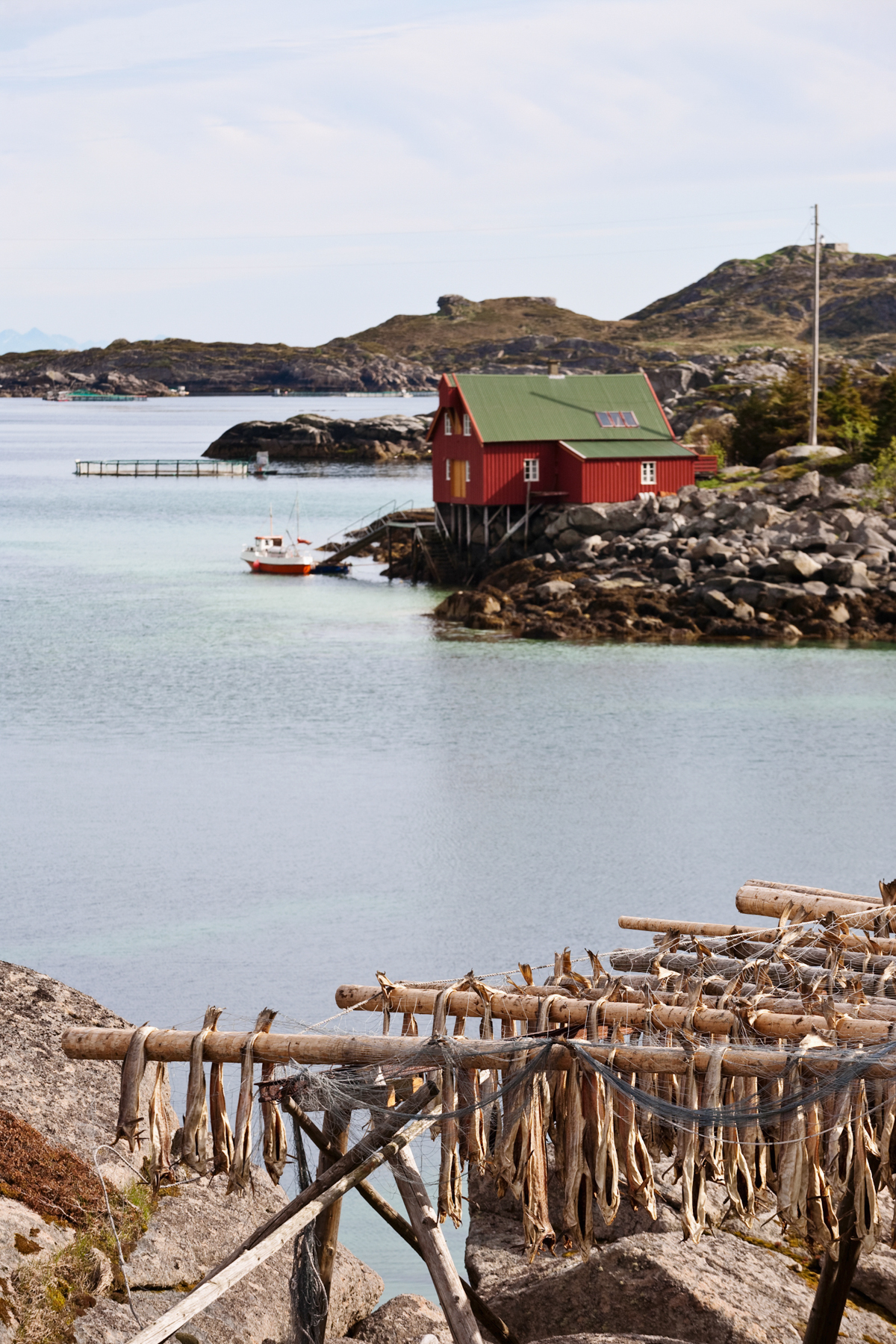
|
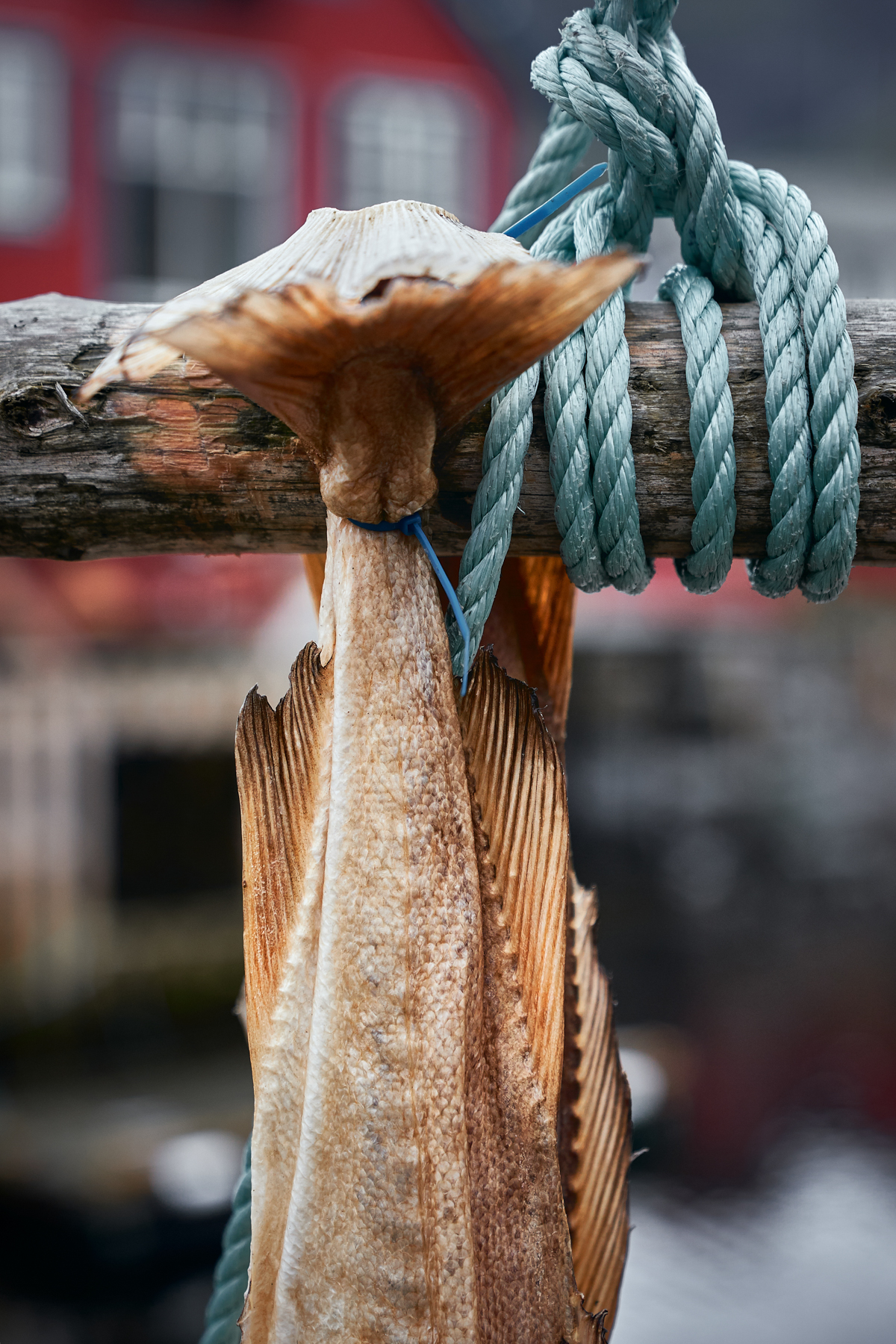
|
Sursild
Pickling is an old method of preservation and much like their Nordic cousins, Norwegians are extremely fond of pickling herring, aka sursild. After brining, Norwegians may spice their herring with peppercorns and clove (kryddersild), or put it into a tomato sauce (tomatsild) or lightly soured cream (rømmesild). When in Norway, there’s no single way to enjoy a pickled herring but it is usually accompanied with dark rye bread or boiled potatoes.

Photo credit: : © Adobe Stock 232832315
Raspeballer
A farmer’s favorite, raspeballer are potato dumplings that, depending on where you are, go by different Norwegian names. In their simplest form, raspeballer are made with potatoes, flour, and salt. They can be served savory or sweet, and the former is usually finished in bacon fat. Because, why not?

Photo credit: : © Adobe Stock 120802669
Wild game
Game meats like moose, reindeer, elk, hare, and wildfowl are quite special in Norway as many of their hunting traditions date back to a pre-Viking past. Out of season, you can find these meats cured in specialty shops or served with bold sauces on special occasions. If you have the opportunity, try finnbiff – an indigenous Sami dish. It’s made with thinly sliced reindeer sautéed in a hearty stew. Sorry Rudolf.
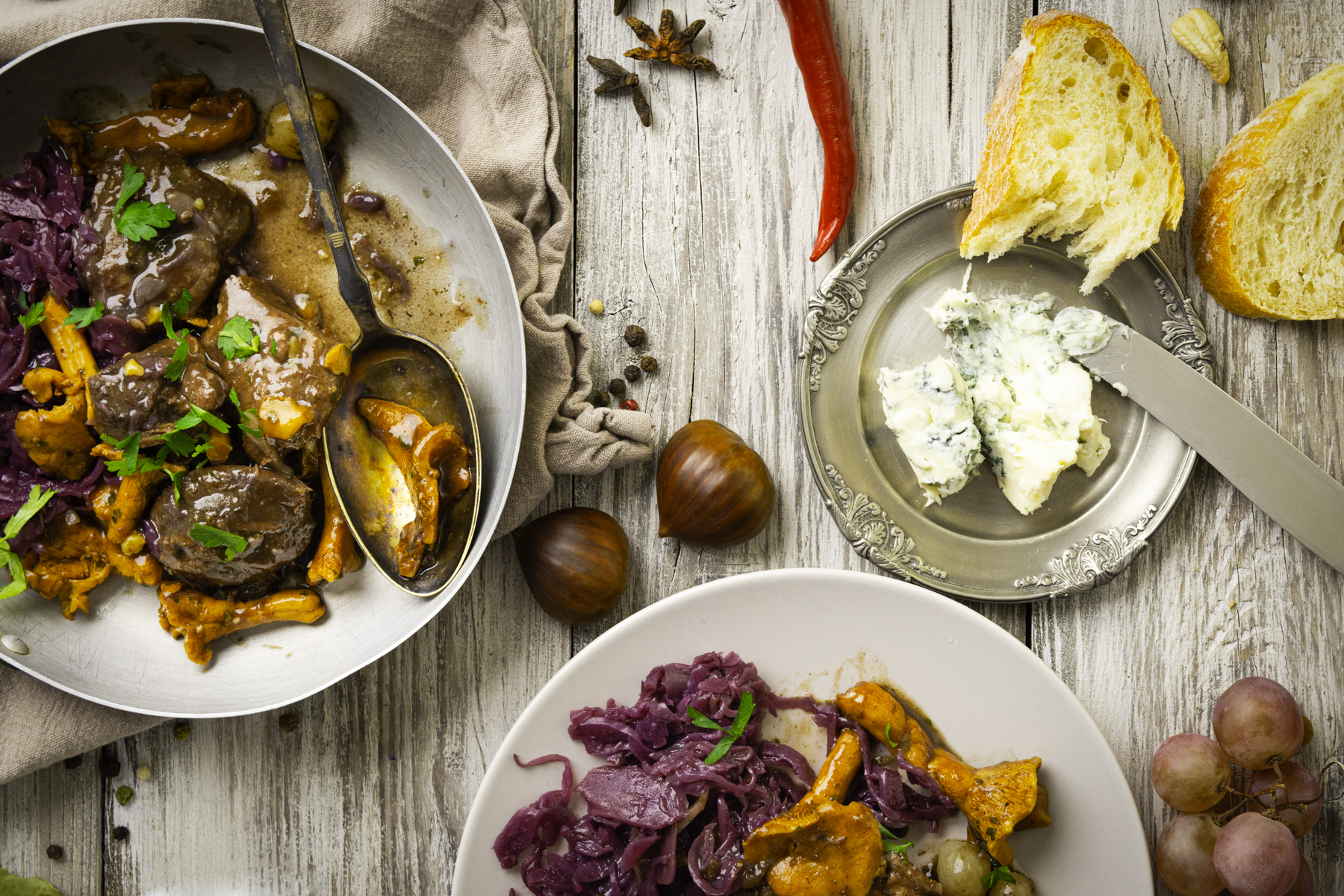
Photo credit: : © Adobe Stock 302172028
What should I eat in Oslo?
Aside from the above of course. If you’re visiting Oslo, be sure to add these quick bites to your to-eat list. You’ll still be eating Norwegian and at a fraction of the cost.
Pølse med lompe
Pølse med lompe is a hotdog but with a Norwegian twist: the bread (lompe) looks like a tortilla and is wrapped around the sausage. I mean, who knew you could improve upon perfection?
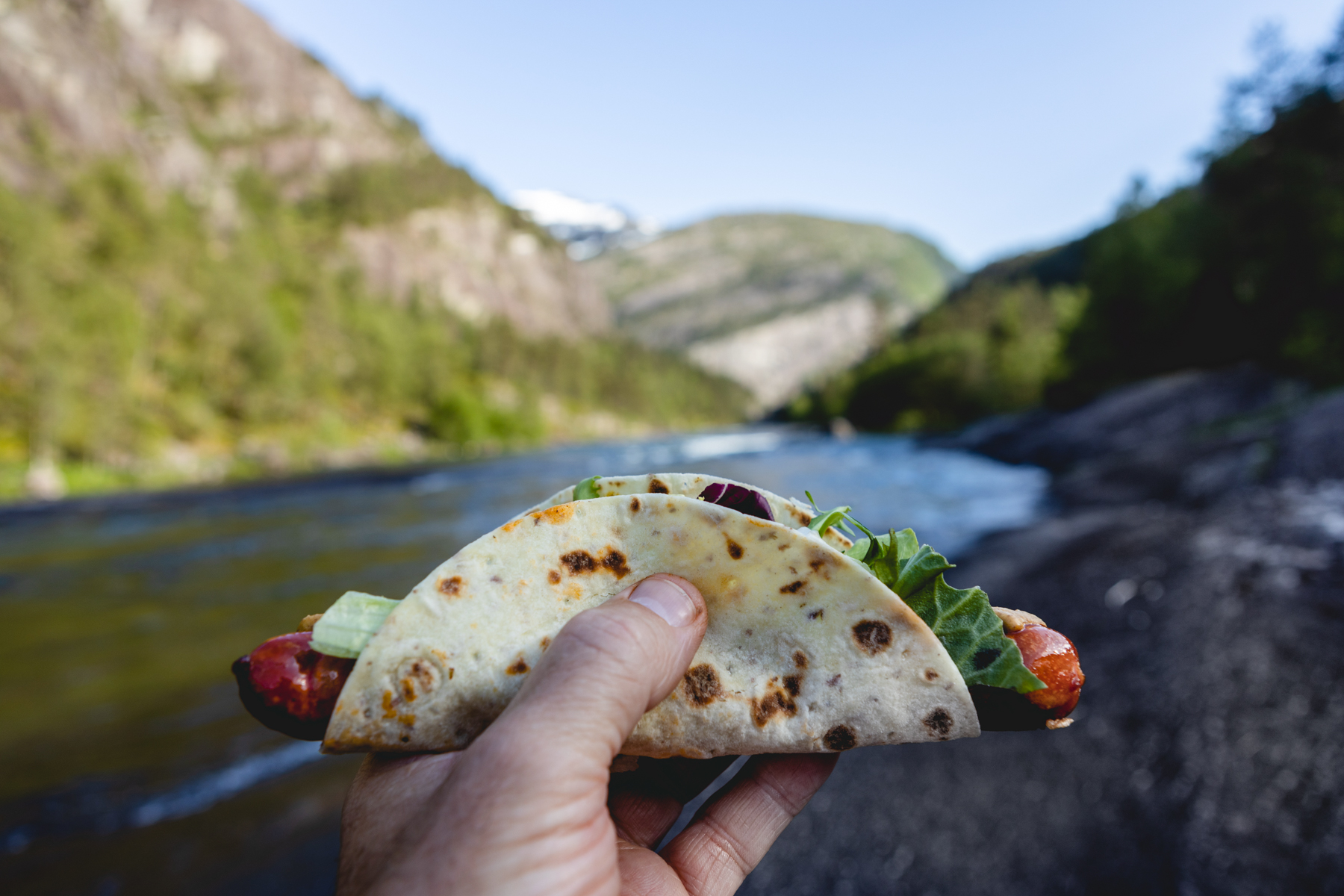
Fiskesuppe
It’s ordinarily not advisable to order a cream-based fish soup in the summer (chowder to cool down, anyone?) but in Norway, you can make an exception. It’s when this dish will have its freshest ingredients, and they’re some of the best in Norway! Fiske suppe is uncomplicated yet delicious. Try it fully loaded with cod, salmon, and Norwegian blue mussels.

Traditional Norwegian desserts and sweets
Kvikk Lunsj
The Scandinavian version of KitKat bar, these chocolate-covered wafers are beloved by all Norwegians. Kvikk Lunsj (literally ‘Quick Lunch’ – NOT take a break. An important disclaimer for *ahem* legal purposes) has been produced in Norway since the 1930s and its image is strongly tied to the outdoors – it’s marketed as the “hiking chocolate.” Estimates are that the average Norwegian eats nine Kvikk Lunsj a year. A third of them are consumed over the Easter ski break.

Vafler
It would be criminal to talk about Norwegian food and not mention vafler, or waffles. They’re everywhere: restaurants, sporting events, and in home kitchens. Norwegian vafler are more eggy than other kinds of waffles and pressed in the shape of a heart. Try them topped with berries or brown cheese, layered as a cake (vaffelkake), or wrapped around a smoked sausage (pølse i vaffel). Those damn Norwegians have done it again!
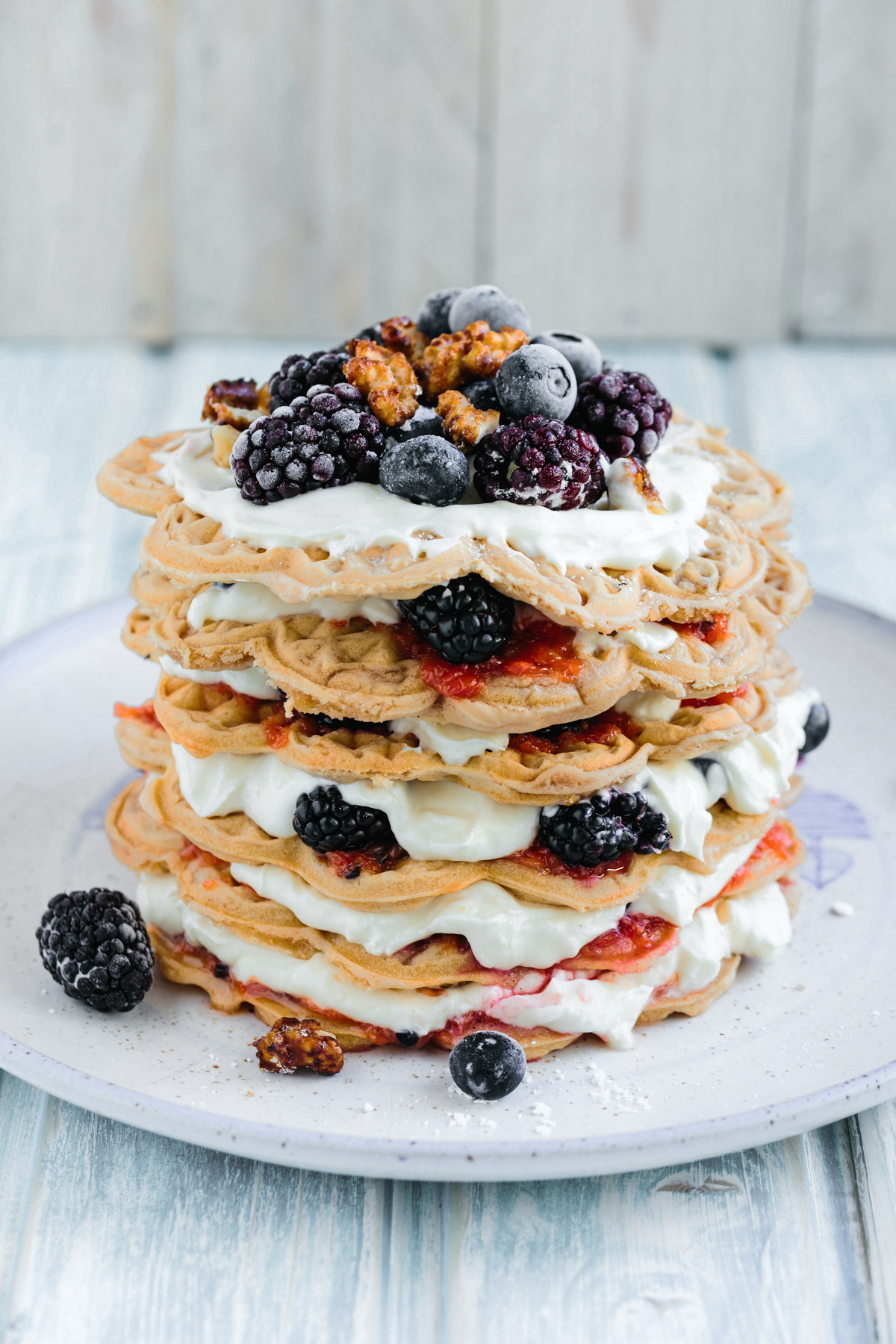 |
 |
Fruktsuppe
Norwegian ‘fruit soup’ is a traditional peasant’s dish made with dried fruits, water, sugar, and potato flour. As a rule of thumb, if the third ingredient listed is “sugar” it’s going to taste good. It’s often warm, topped with cream, and very satisfying. It has that Grandma’s-cooking look and taste.

Kvæfjordkake
Originally from Kvæfjord in northern Norway, this cake has earned the nickname “world’s best”. Why? Does two layers of sponge cake, one layer of vanilla custard, and a topping of almonds and stiff meringue answer your question? Norwegians really love this dessert. It even has its own song, Hymne til Kvæfjordkaka!

Photo credit: : © Adobe Stock 199839649
Skolebrød
These sweet buns are leavened with yeast and topped with custard and flakes of coconut. They are the go-to treat for kids’ lunch packs, ergo the name skolebrød (school bread) or skoleboller (school buns).
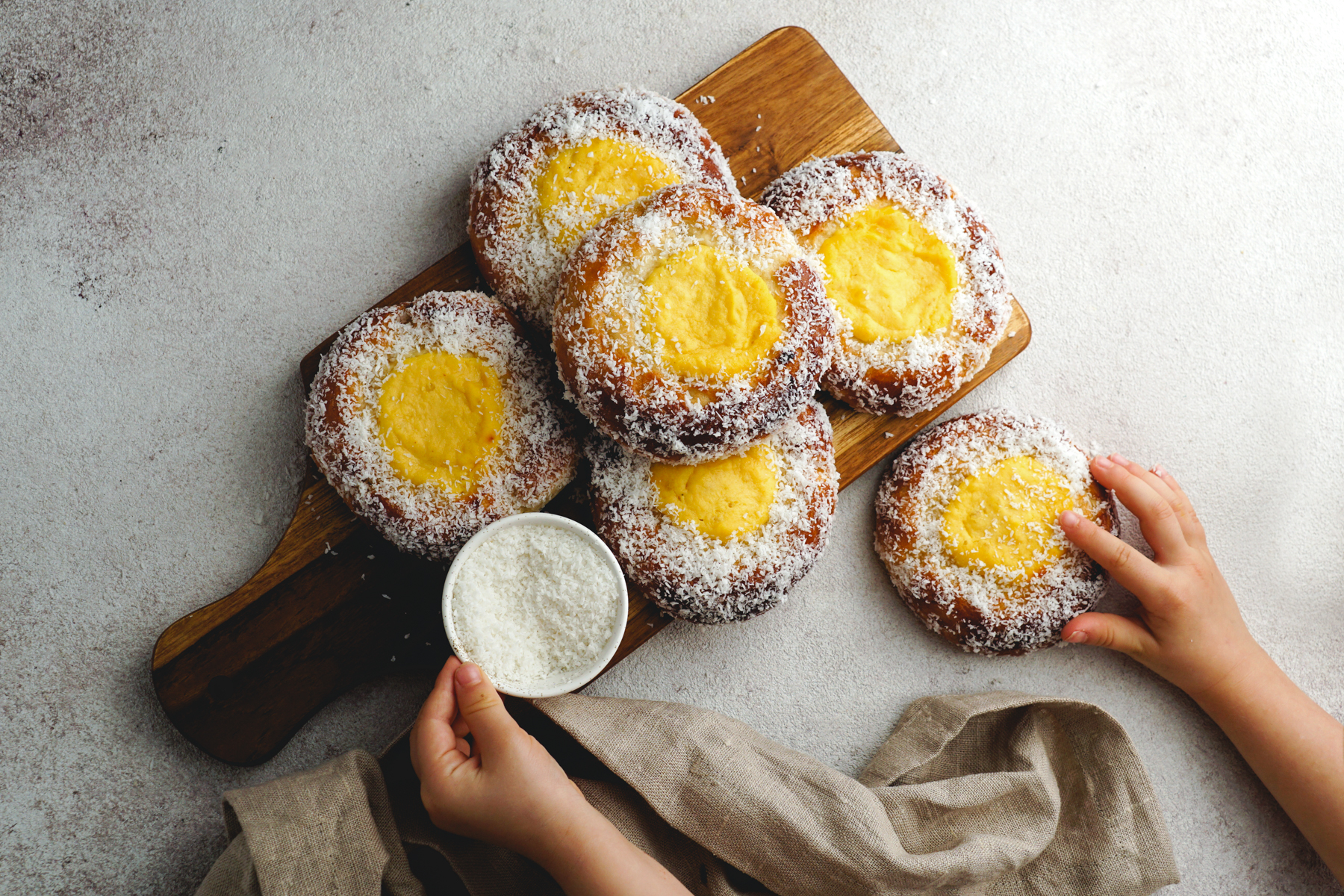
Photo credit: : © Adobe Stock 352040014
Semulepudding
Semulepudding is an easy, sweet porridge that’s been eaten on Sundays in Norway for generations. It’s made with durum wheat, egg yolks or milk, butter, sugar, and fruit compote and also goes by the name “princess pudding”. Variants of this semolina pudding are found throughout Europe, but Norway’s is particularly tasty.
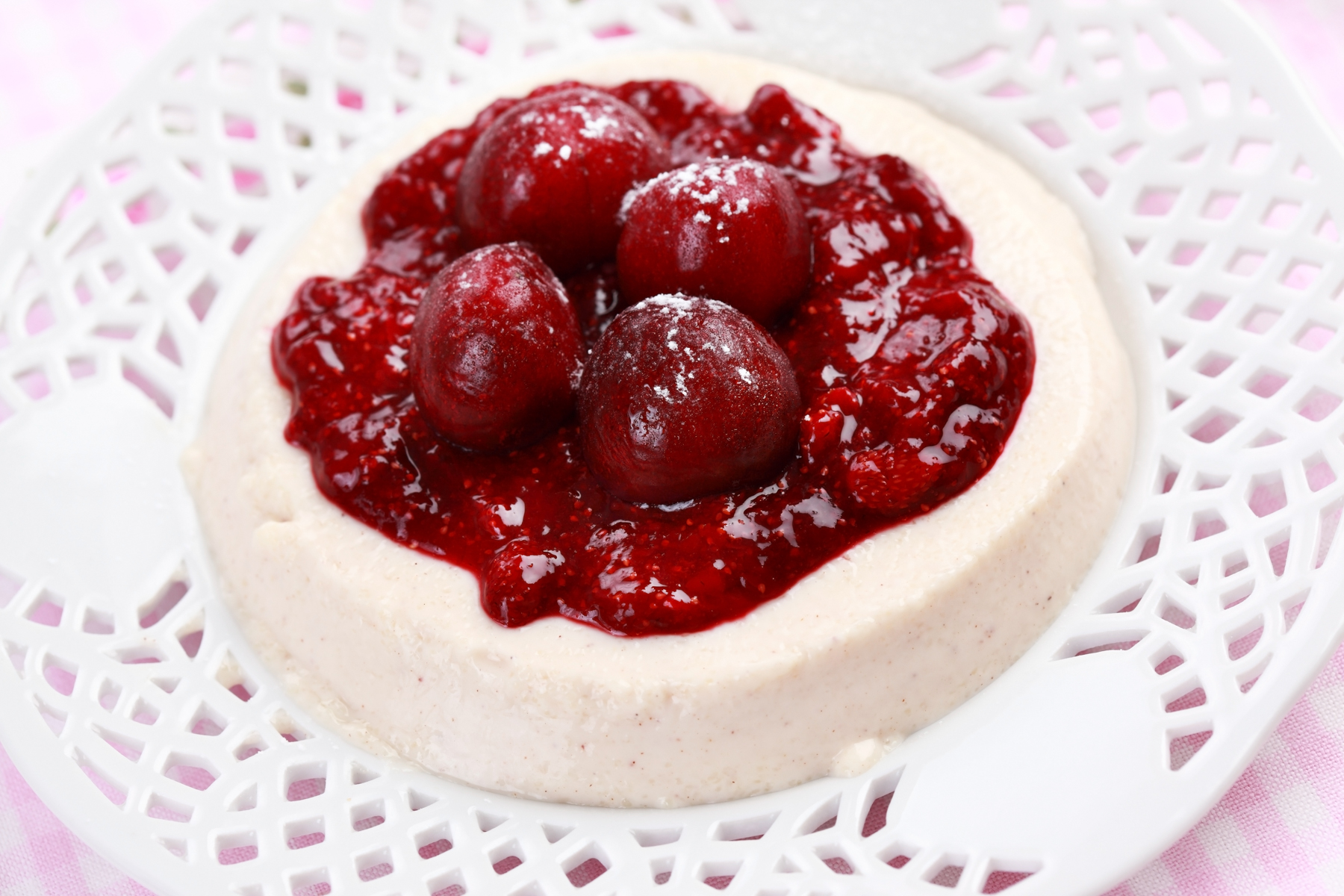
Photo credit: : © Adobe Stock 43939869
Salt lakris
You thought you could escape the salted licorice? You thought wrong. Much like the Dutch and the Danes, Norwegians have a weakness for licorice and, similarly, prefer theirs with salmiak. This ammonium compound gives licorice a salty taste, ranging from a slight tickle to a full-on sensory assault. It is loved and hated in equal measure.
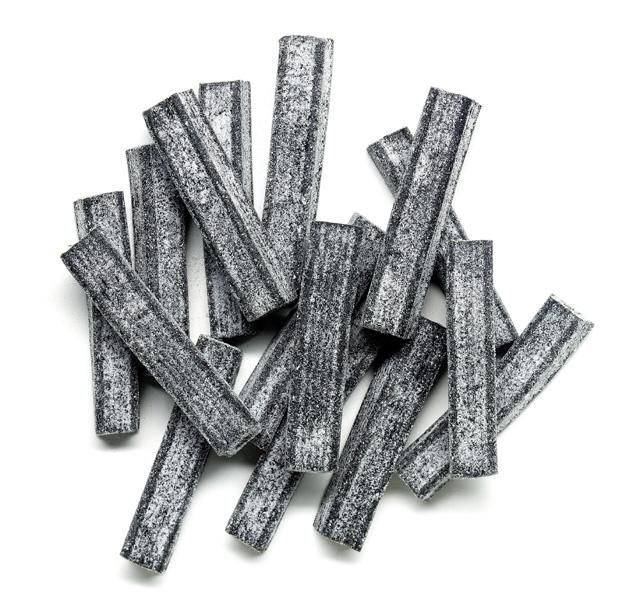 |
 |
What do Norwegians eat for breakfast?
Brunost
Norwegians aren’t big breakfast eaters, but when they do indulge, you better believe there will be brunost, or brown cheese, around. Brunost isn’t actually cheese at all; it’s a mixture of boiled milk, cream, and goat or cow whey. Once the water has evaporated, the milk sugar begins to caramelize which makes the “cheese” slightly sweet with a toffee-like color. If you see it for breakfast, it’ll usually be sliced on crispbread. Some consider it the Norwegian Vegemite, but it’s genuinely quite nice despite sounding so offputting.
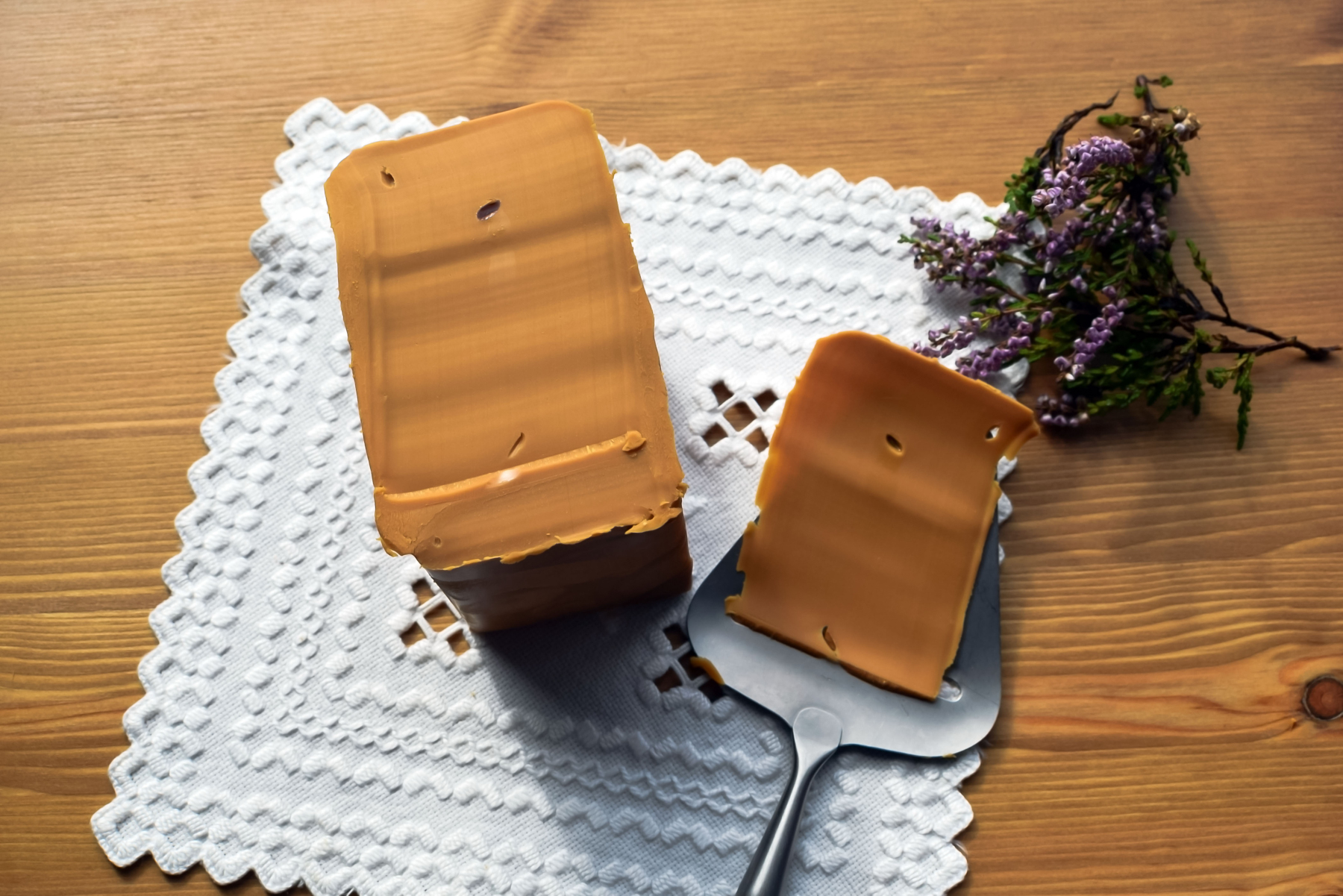
Photo credit: : © Adobe Stock 222375007
Røkelaks
Norwegian røkelaks, or smoked salmon, is prized for its color, texture, and taste. The secret is that it’s dry cured with woods like aromatic juniper. There are many ways to pair it and there really is no bad combination! Norwegians eat it with bread, potatoes and cream, or scrambled eggs.
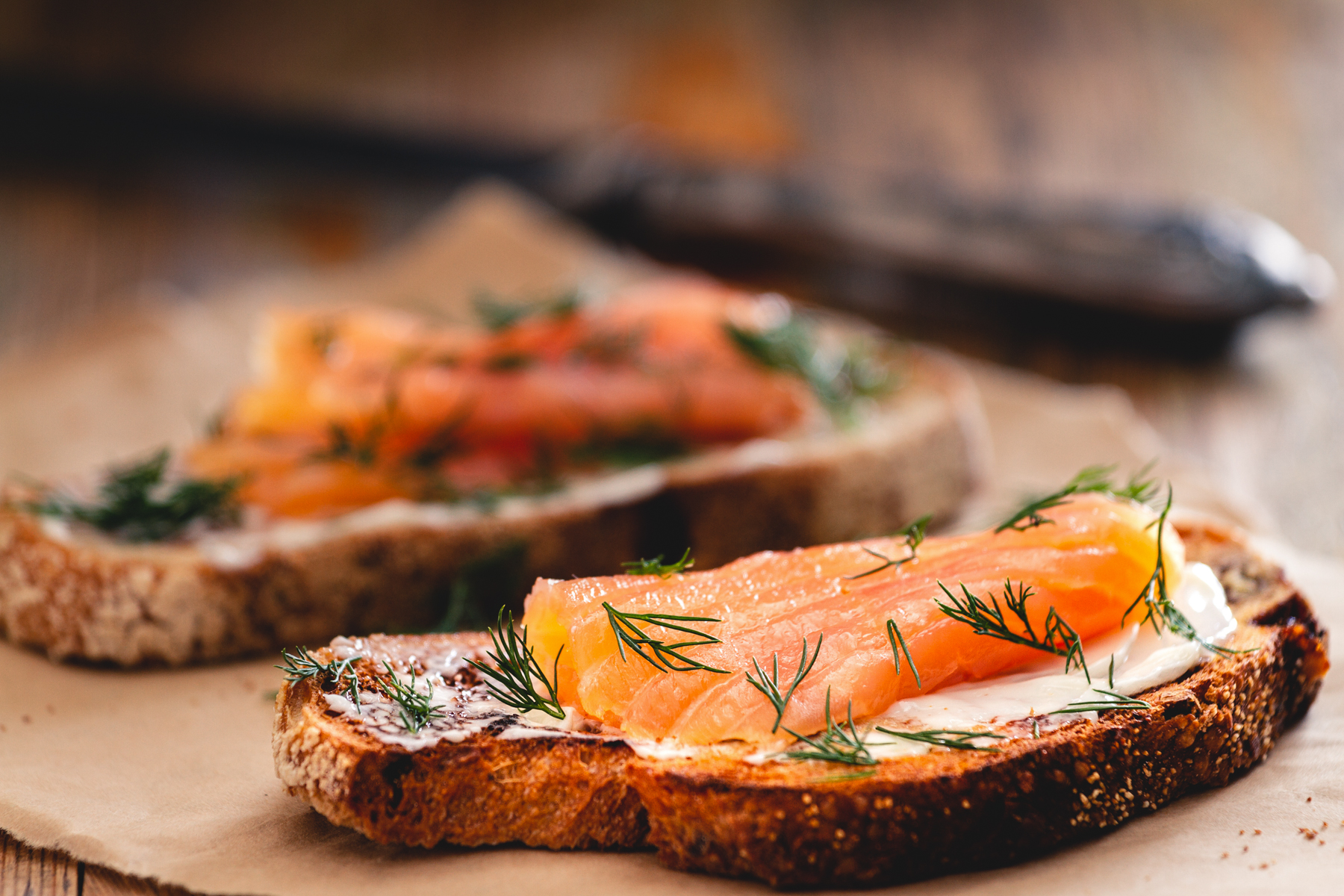
Photo credit: : © Adobe Stock 206155434
What do Norwegians drink?
Akevitt
Sure, you can find aquavit across Scandinavia, but the Norwegian version is rather unique. It’s distilled from potatoes – in Sweden and Denmark they typically use grains – and is aged for at least one year in oak casks. These differences mean Norwegian akevitt has a more robust flavor. The most famous brand, Linie, matures while crossing the equator in the hull of a ship. Sip the spirit straight up or in a Norwegian fjellbekk – a cocktail made with aquavit, vodka, lemon, and lime.
 |
 |
Solo
Considered the nation’s soft drink, the recipe for Solo is originally from Spain. Torleif Gulliksrud fell in love with the sunny Spanish beverage and, after launching his own in 1934, so did the rest of Norway. While Solo is no longer Norway’s most popular soda (it ranks third), the carbonated drink still holds a special place in locals’ hearts.
 |
Cider
It shouldn’t be surprising that Norway has award-winning ciders, the fermenting tradition goes back to the Viking Age. Apple varietals are as numerous in Norway as grapes are in France, and the popularity of Norwegian hand-crafted ciders are at an all-time high. The best bars in Oslo will have only the finest on tap; they’ll also have non-alcoholic eplemost, which is a pressed apple juice.
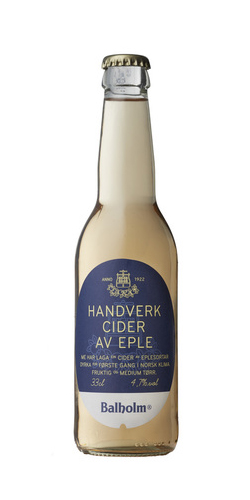 |
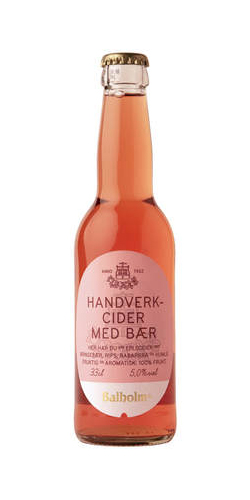
|
 |
Coffee
Like the rest of Scandinavia, Norwegians are big on coffee; they are the world’s second highest consumers of the caffeinated stuff – with Finland taking the top spot. The coffee culture in Norway has been around for hundreds of years but it’s only over the last century and half that it’s transitioned into an award-winning art. Kokekaffe – literally ‘boil coffee’ – is Norway’s famous seeping technique. It produces an aromatic light brew that’s best served black and slightly cooled.

Mjød
This ancient Norse honey wine was believed to have mythical powers that could turn any drinker into a scholar or a poet. Like other meads, Nordic mjød is made by fermenting honey with water and seasonal spices. The sweet spirit faded into obscurity years ago but seems to be making a comeback within the craft-beverage crowd.

Tjukkmjølk
Tjukkmjølk is a milk beverage from central Norway that’s so distinctive, it’s earned protected geographic status. It’s named after its consistency – tjukkmjølk means ‘thick milk’ in Norwegian – which is achieved by adding butterwort plant to fresh milk. Norwegians associate this tangy dairy drink with Nordic summers and eat it for breakfast, as a snack or a drinkable yogurt.

Beer
Like all of Scandinavia, Norway is a nation of beer enthusiasts and until the Industrial Age each household would brew their own. As is the case in most of the western world, craft beers have become trendy in Norway with microbreweries popping up every month. However, beer in Norway is, um, not cheap. Alcohol is heavily taxed, especially if the alcohol by volume is over 4.7%.
The New Nordic Movement and where to try it in Oslo
The “New Nordic Kitchen” is a culinary and cultural movement that started in Scandinavia over 20 years ago. It emphasizes the use of local, seasonal ingredients and traditional, Nordic methods of food preparation. Purity, freshness, and simplicity are cross-cutting tenets, as are ethics and cooperation.
In 2004, the New Nordic Manifesto was created to outline the guiding principles of the movement. Danish chef and restauranteur, Claus Meyer, was the driving force behind the project that included prominent Norwegian chefs Eyvind Hellstrøm and Roger Malmin, as well as others from across the Nordic countries.
Looking to find a spot to try the Norwegian take on New Nordic dishes? Take a look at our favorite restaurants in Oslo!
Traditional Norwegian holiday foods
Norway has quite a number of holiday traditions, especially around the Easter and Christmas seasons. Here are some of Norwegian’s best holiday foods. When in town, we recommend giving them a try!
Syttende Mai (Constitution Day) – May 17th
Norwegians celebrate their Independence Day with flags, parades, and lots and lots of cakes. Bløtkake, a summery Norwegian gateau, is guaranteed to make an appearance with strawberries and blueberries in the shape of the national flag. You’ll also see kransekaker, the Scandi cake shaped like a Fisher Price Rock-a-Stack. It’s made with at least 18 rings of almonds, sugar and egg whites.

Fastelavn – during Shrovetide
Fastelavn is the Scandinavian equivalent of Mardi-Gras and each country celebrates with their own sweet fastelavnsbolle. The Norwegian version looks similar to the Swedish kind except for the berry jam, Swedes use marzipan instead.
A fastelavnsbolle is more cream and filling than it is bread. (No complaints here!) They’re a tasty seasonal treat eaten once a year.
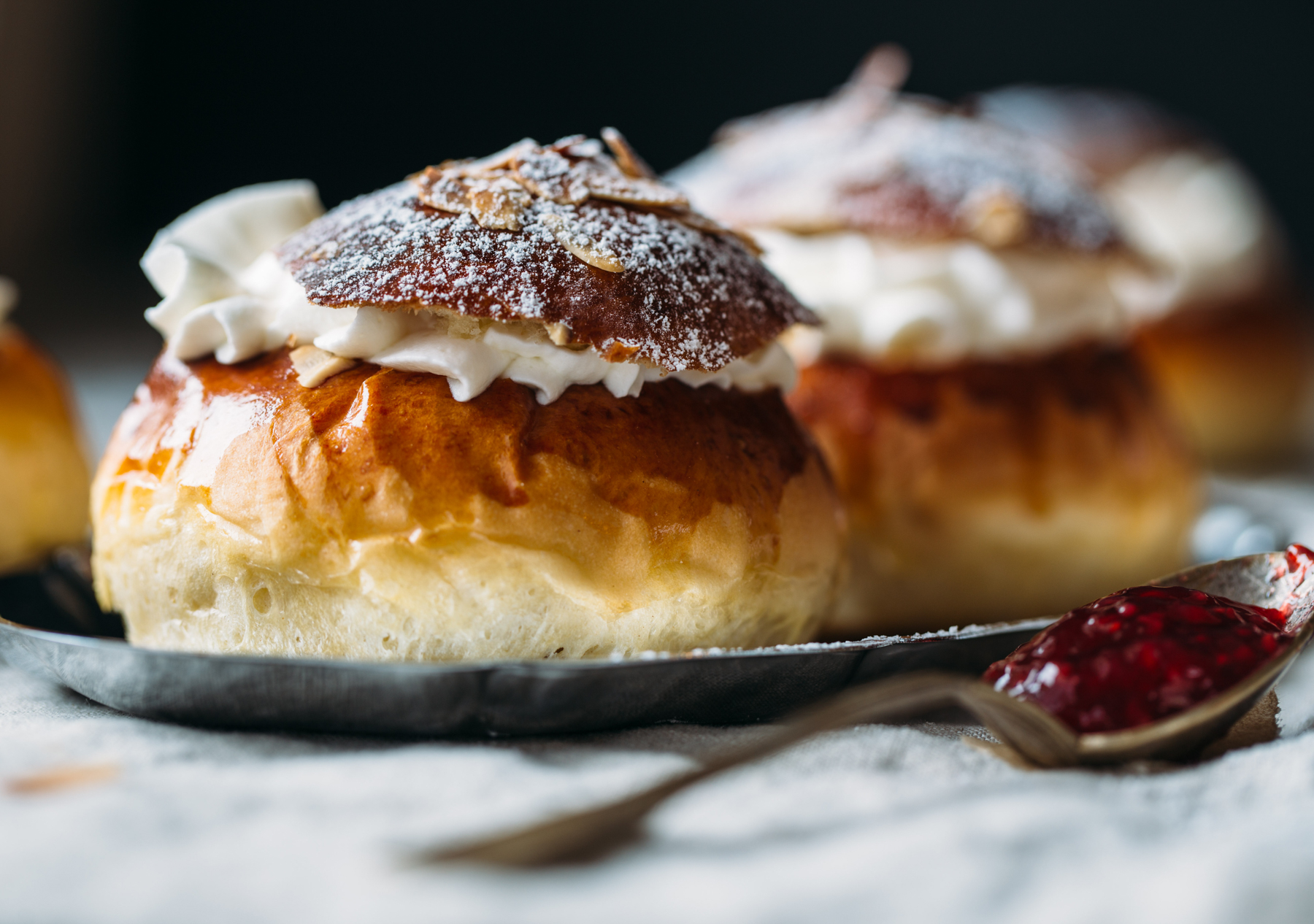
Easter
In Norway, Easter means a week in the mountains, skiing, and eating Kvikk Lunsj chocolate. Norwegians love Easter. It’s more like the Norwegian “Spring Break” than the long church service many of us are used to. Staple foods include lamb (which is a relatively new custom), eggs, lefse, and oranges – a holdover from Norway’s mercantile past. Traditionally, though, the Norwegian Påske meal was rakfish (fermented trout) with potatoes or bread, raw onions, and cream. I wonder why it fell out of fashion….?
Olsok (St. Olaf’s Day) – July 29th
Named after the Norwegian King Olaf II, Olsok is a national celebration in Norway, Faroe Islands and parts of Finland and Sweden. King Olaf is credited with spreading Christianity in Norway and the day used to include a big non-secular feast. In recent times, there has been renewed cultural interest in commemorating King Olaf’s death. In Norway, customary foods for Oslok are cured meats and rømmegrøt, a sour-cream porridge.
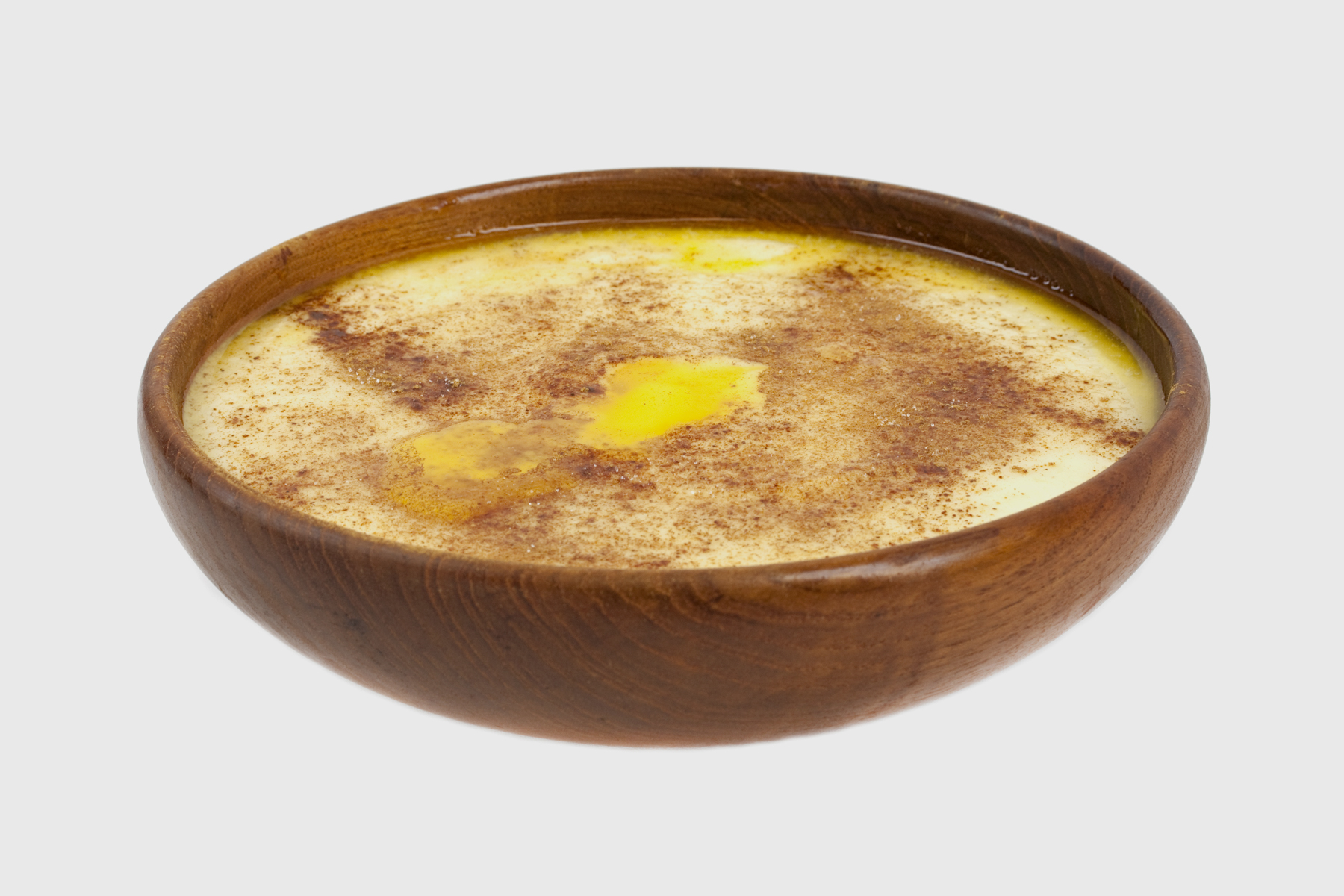
Christmas
Christmas is the holiday in Norway – it’s the time when all the traditions come to life. This means that the season has some of the best Norwegian foods with many regional variations and special touches.
The Christmas season starts on the First Advent Sunday, which is the fourth Sunday before Christmas. On this day, Norwegians light Christmas trees in all the towns, drink gløgg (mulled wine), and eat julekaker (an umbrella term for Christmas sweets). Now, there are so many types of Norwegian julekaker that we could compile a 10-page guide on the subject. But among the most popular are serinakaker (almond butter cookies), krumkaker (thin waffle cookies), julekake (spiced bread with raisins), rosetter (deep-fried pastry shaped like a snowflake), pepperkaker (gingerbread cookies), and fattigman (it’s kind of like a knot-shaped hard donut).

In the run-up to Christmas, julebord (Christmas parties) are also held throughout Norway. They’re an all-night, all-you-can-eat and all-you-can-drink affair with friends, family, or co-workers. Dishes include pinnekjøtt (salted lamb ribs), lutefisk (salted, dried cod), and copious amounts of alcohol. Special Christmas beers and sodas make an appearance, as does herb-infused akevitt.
In parts of western Norway, you’ll also find smalahove, a notorious dish made of an entire sheep’s head.
Holiday eating peaks with a traditional Christmas Eve dinner on December 24th where ribbe (roasted pork belly), juletorsk (Christmas cod), pinnekjøtt, kohlrabi, and, of course, risengrynsgrøt (rice pudding) are served. If you can find it, you should absolutely try multekrem – it’s made with coveted cloudberries and freshly whipped cream.
New Year’s Eve – December 31st
While dinner may vary from home to home, meat is the main act on the Norwegian New Year’s Eve menu. Lamb ribs, reindeer, and pork are among the most popular pre-firework meals but turkey is, surprisingly, the number one choice.
Traditional and New Nordic Norwegian cookbooks
Looking to try your hand at some traditional Norwegian cooking? Then give these essential cookbooks a read.
Ny Norsk Mat by Even Ramsvik
Written by Norwegian Michelin-star chef Even Ramsvik, Ny Norsk Mat was named “Best Norwegian Cookbook” in 2017. Recipes are divided by seasons and range from a spring-inspired buttermilk mackerel to a frozen summer elderflower dessert. The cookbook is a true masterclass on Norwegian gastronomy. Grab a translator (Google will do), this one is worth the extra step.
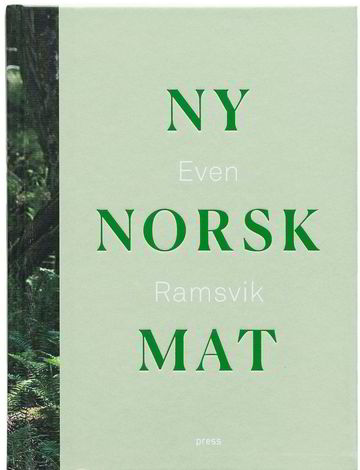
Ny Norsk Mat by Even Ramsvik
North Wild Kitchen: Home Cooking from the Heart of Norway by Nevada Berg
This inviting cookbook photographed and written by American food blogger Nevada Berg is a visual story of Norwegian culinary traditions. Each chapter is centered around a local food custom and demonstrates that Norway is a culinary force within the New Nordic movement.

North Wild Kitchen: Home Cooking from the Heart of Norway by Nevada Berg
Lises Jul: Mine Beste Oppskrifter by Lise Finckenhagen
The first Christmas cookbook from award-winning Norwegian chef Lise Finckenhagen, Lises Jul is a how-to for a classic Norwegian Christmas. The recipes include all the festive favorites like ribberull (seasoned pork rib rolls) and serinakaker (almond butter cookies), alongside colorful photos and personal stories from Lise’s childhood.

Lises Jul: Mine Beste Oppskrifter by Lise Finckenhagen
Maaemo by Esben Holmboe Bang
Even if you don’t prepare a single one of its 80 recipes, this stunning cookbook will not disappoint. Written by Esben Holmboe Bang, the Danish chef behind Norway’s most applauded restaurant, Maaemo is as much coffee table fodder as it is cooking inspiration. In addition to its breathtaking pictures and illustrations, the book offers a peek into one of Scandinavia’s best restaurants. The book’s forward is also written by René Redzepi, chef and co-founder of the world famous noma restaurant.

Maaemo by Esben Holmboe Bang
Stor Kokebok før større og mindre husholdninger by Henriette Schønberg Erken
Considered revolutionary when it was first published in 1914 because it discussed nutrition in food, this book by Henriette Schønberg Erken became the cooking tome for Norwegian women. The cookbook is more than 800 pages and has been reprinted repeatedly since its release. It has everything from baking to canning and animal slaughtering. It’s the kind of cookbook that’s passed down from generation to generation.

Stor Kokebok før større og mindre husholdninger by Henriette Schønberg Erken
Want to find out more about food in Scandinavia? Check our guide to Danish food, and Swedish surströmming.
Header image credit: © Adobe Stock 288279370

